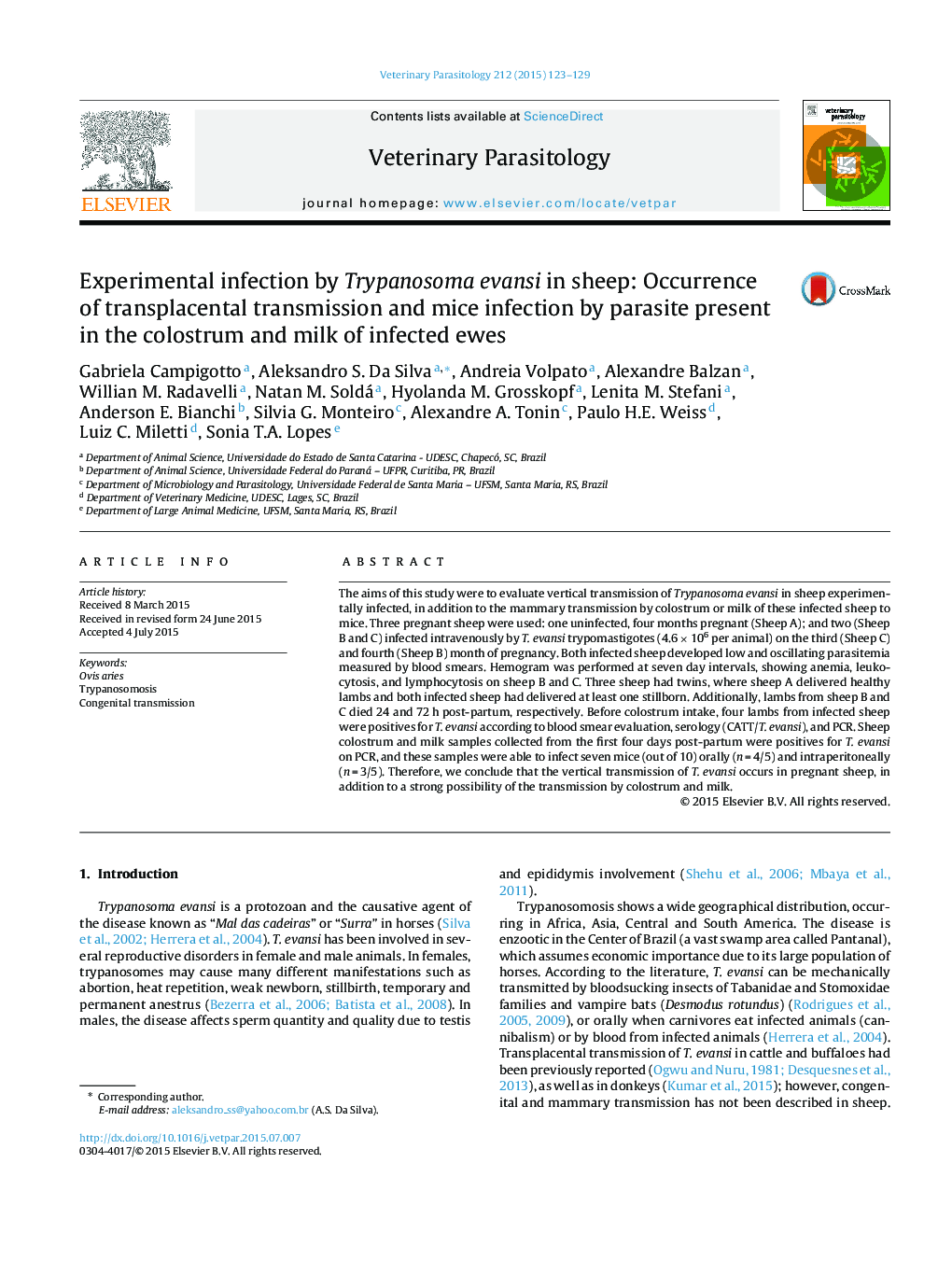| Article ID | Journal | Published Year | Pages | File Type |
|---|---|---|---|---|
| 5802340 | Veterinary Parasitology | 2015 | 7 Pages |
â¢Trypanosoma evansi can infect animals by different routes.â¢Congenital transmission of T. evansi in sheep has been confirmed.â¢Colostrum of sheep may harbor viable T. evansi.â¢Colostrum from T. evansi infected ewes was able to infect mice.
The aims of this study were to evaluate vertical transmission of Trypanosoma evansi in sheep experimentally infected, in addition to the mammary transmission by colostrum or milk of these infected sheep to mice. Three pregnant sheep were used: one uninfected, four months pregnant (Sheep A); and two (Sheep B and C) infected intravenously by T. evansi trypomastigotes (4.6 Ã 106 per animal) on the third (Sheep C) and fourth (Sheep B) month of pregnancy. Both infected sheep developed low and oscillating parasitemia measured by blood smears. Hemogram was performed at seven day intervals, showing anemia, leukocytosis, and lymphocytosis on sheep B and C. Three sheep had twins, where sheep A delivered healthy lambs and both infected sheep had delivered at least one stillborn. Additionally, lambs from sheep B and C died 24 and 72 h post-partum, respectively. Before colostrum intake, four lambs from infected sheep were positives for T. evansi according to blood smear evaluation, serology (CATT/T. evansi), and PCR. Sheep colostrum and milk samples collected from the first four days post-partum were positives for T. evansi on PCR, and these samples were able to infect seven mice (out of 10) orally (n = 4/5) and intraperitoneally (n = 3/5). Therefore, we conclude that the vertical transmission of T. evansi occurs in pregnant sheep, in addition to a strong possibility of the transmission by colostrum and milk.
